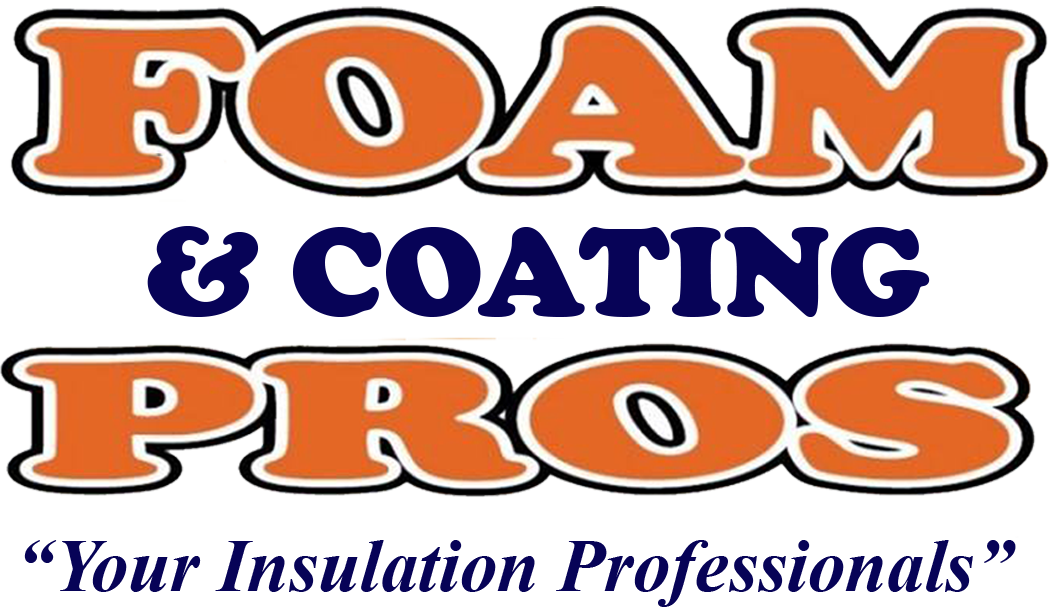Products
Professionally Applied Spray Foam Coating in Mainland Nova Scotia
Foam and Coating Pros sprays polyurethane foam in liquid form directly onto the walls and floor cavities of your building. It quickly transforms into hard foam insulation.
We use two types of spray foam, both of which are free of ozone-depleting chemicals, formaldehyde and asbestos.
Half Pound Foam
This is an open cell foam, which means that the tiny cells of the foam are not completely closed. They are broken and air fills the open space inside the foam. This makes the foam softer feeling than the 2 pound foam. This foam has a thermal resistance R-Value of 3.7 per inch.
Two Pound Foam
Two pound foam is closed cell. It is filled with a gas that helps the foam rise and become a more effective insulator. Closed cell foam has an R-Value of 6.5 and a greater resistance to air and water vapour.
At a thickness of two inches or more, it eliminates the need for poly on the walls.
Both foam types are commonly used in building applications in mainland Nova Scotia. Feel free to contact us to see which product is best for you and your specific needs.
Blown In Insulation
Exactly as it sounds, blown-in insulation is insulation blown through a tube into attics and walls.
There are two types of blown-in insulation; fiberglass and cellulose.
Sold in compressed blocks, this type of insulation is broken down into tiny pieces by a powerful machine known as a blower, forced through a large hose, and is directed into place by the installer.
These tiny pieces are spread evenly throughout the space to fill all gaps or voids and help to cover any obstacles such as outlets, wires, pipes and ductwork. In attics, blown-in insulation can be applied directly to the ceiling or over top of other types of insulation to the desired depth or R-value.
Becoming more and more popular is the process of applying two (2) inches of closed cell Spray foam to provide a vapor barrier which can be walked on and topping up with blow-in insulation to the required R value.
When blown-in insulation is installed in walls, small holes are drilled in the wall to give access to the wall cavities. Upon completion of installation the holes are plugged. Fiberglass insulation gains its insulation power by trapping air in the tiny air pockets created by the billions of tiny glass fibers. Since fiberglass is not effective when compressed, thicker applications must be used to obtain the desired R-value.
Cellulose insulation is actually shredded paper broken down to its most basic element, cellular fibers from a tree that is treated with a fire retardant chemical. Cellulose does not have air pockets to rely on to control heat, it is the cells themselves that have their own insulating power which allows it to be compressed. Both fiberglass and cellulose can be effective if they are installed properly, they offer similar R-values (ranging from R 2.2 to R 4.3), and they both require a vapour barrier.
Mineral Wool Batt Insulation
Also Referred to as Rockwool, Stone Wool, Slag Wool, Mineral Wool is made by the process of melting stone (basalt and iron-ore slag) spinning the fibers and adding a binder to hold the fibers together. Formed into batts, this semi-rigid, fairly dense (R-4 per inch) insulation can be effective if significant core is taken during installation to avoid gaps and voids.
Besides functioning as a thermal insulation, mineral wool is good for sound proofing and is naturally fire resistant. Easy material to work with mineral wool can be used in walls, ceilings, attics, rim joists and floors. A vapour barrier must be applied.
Rigid Foam Board
Foam Insulation is a multi-purpose board that helps to meet the needs of commercial and residential foundation and slab market. The closed-cell structure resists water absorption, enabling it to retain a high R-value over time.
It helps protect foundation damp proofing and waterproofing especially during backfilling. It also provides a secondary barrier against ground water leakage. Freeze –thaw cycling of the foundation wall is minimized, reducing the possibility of cracking. A warmer foundation wall reduces the potential for condensation and adds to the thermal mass of the building.
Easy to handle, cut and install using a compatible adhesive, can be air-tight if sealed/taped at seams, however may require some bracing for some applications to ensure adhesion. It can be used for foundations, slabs, crawl spaces, interior basement, walls, attics, ceiling with a R-value of 5.0 per inch.
Feel free to contact us to see which product is best for you and your specific needs.
“WE DO IT RIGHT THE FIRST TIME”

